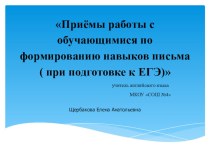- Главная
- Разное
- Бизнес и предпринимательство
- Образование
- Развлечения
- Государство
- Спорт
- Графика
- Культурология
- Еда и кулинария
- Лингвистика
- Религиоведение
- Черчение
- Физкультура
- ИЗО
- Психология
- Социология
- Английский язык
- Астрономия
- Алгебра
- Биология
- География
- Геометрия
- Детские презентации
- Информатика
- История
- Литература
- Маркетинг
- Математика
- Медицина
- Менеджмент
- Музыка
- МХК
- Немецкий язык
- ОБЖ
- Обществознание
- Окружающий мир
- Педагогика
- Русский язык
- Технология
- Физика
- Философия
- Химия
- Шаблоны, картинки для презентаций
- Экология
- Экономика
- Юриспруденция
Что такое findslide.org?
FindSlide.org - это сайт презентаций, докладов, шаблонов в формате PowerPoint.
Обратная связь
Email: Нажмите что бы посмотреть
Презентация на тему Body language
Содержание
- 2. Human beings are also known as “homo
- 3. Charlie Chaplin and other famous actors of
- 4. By
- 5. About one million different gestures, expressions and
- 6. ADVANTAGES AND LIMITATIONS OF BODY LANGUAGE
- 7. Advantages of Body Language: Resourceful managers make
- 8. Limitations of Body Language: Some notable limitations
- 9. How to read body languages
- 10. Noticing the signals that people send out
- 11. Steps
- 12. Pay attention to how close someone is
- 13. Watch their head position.Overly tilted heads are
- 14. On the other hand when coupled with
- 15. Look into their eyes.People who look to
- 16. Some cultures believe that looking at someone
- 17. See if they're mirroring you. Mirroring is
- 18. STEP 5Check their arms.People with crossed arms
- 19. If someone rests their arms behind their
- 20. STEP 6Be aware of nervous gestures:If someone
- 21. If the person wears glasses, and is
- 22. Скачать презентацию
- 23. Похожие презентации
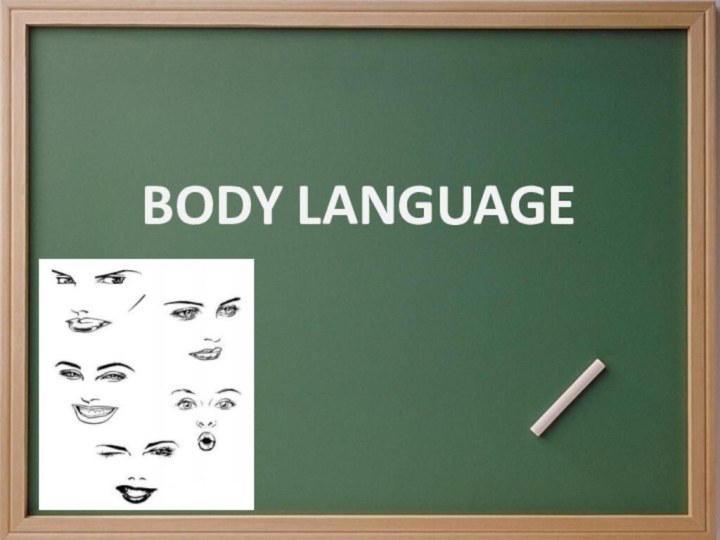
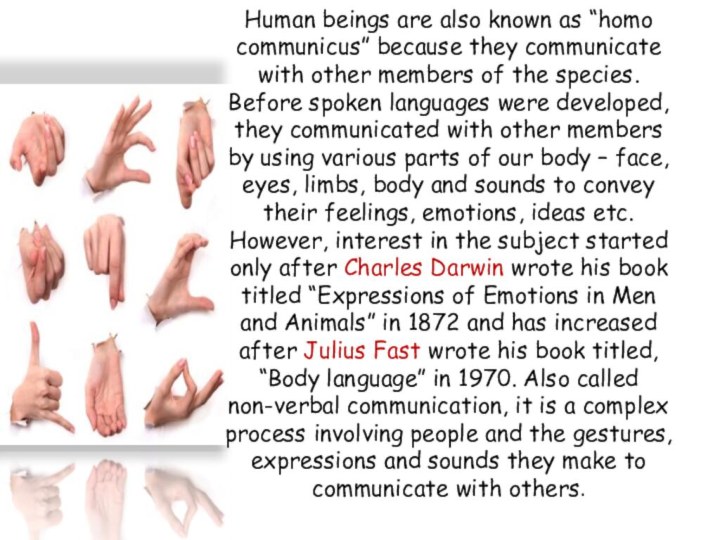
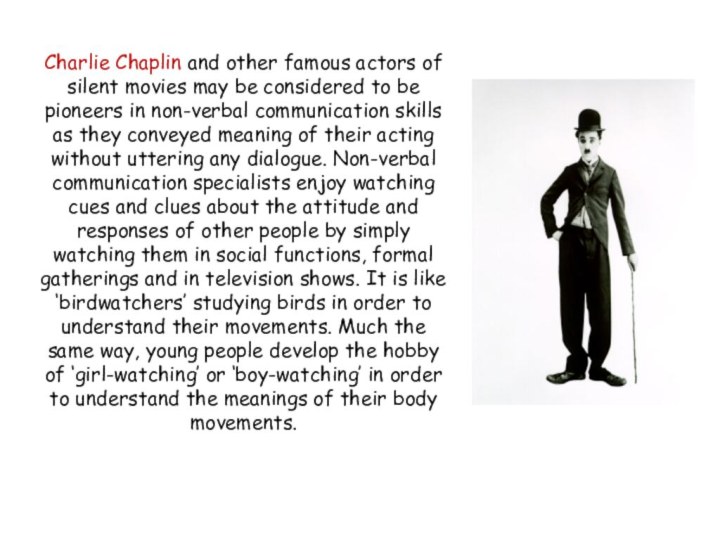
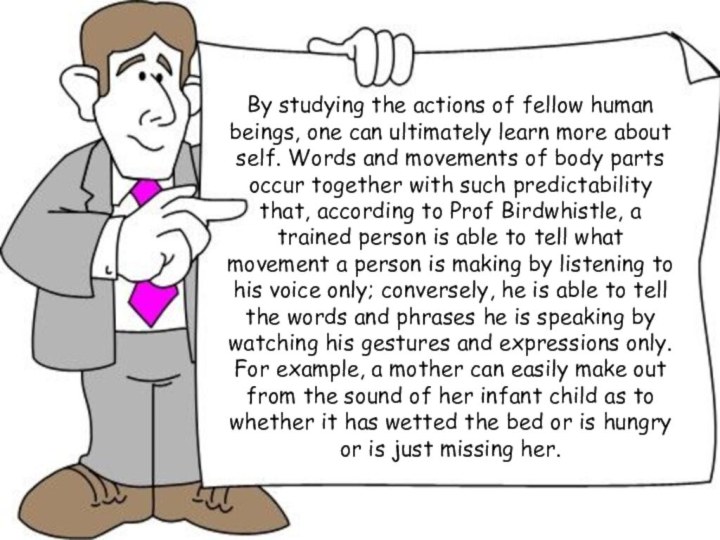

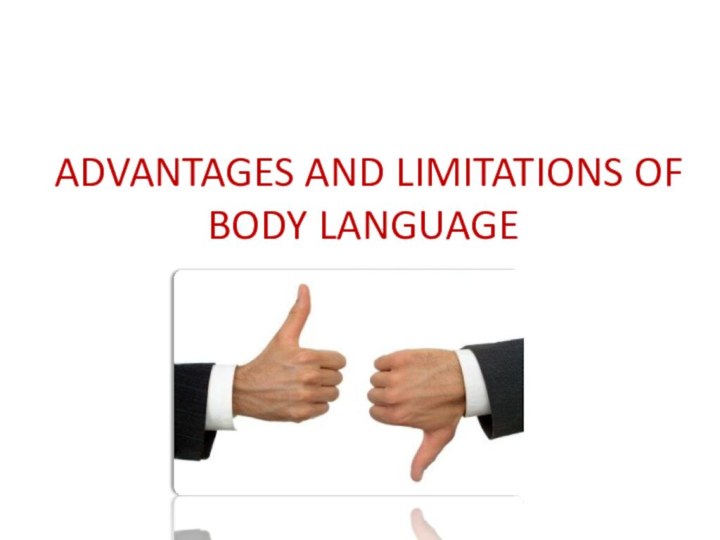
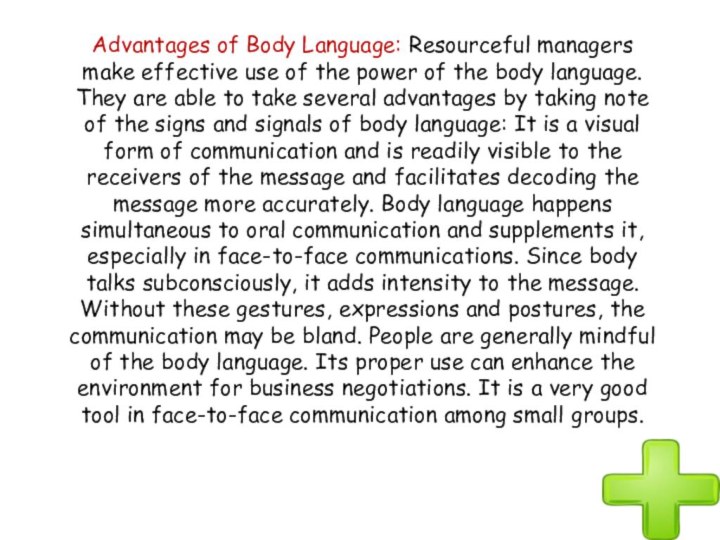
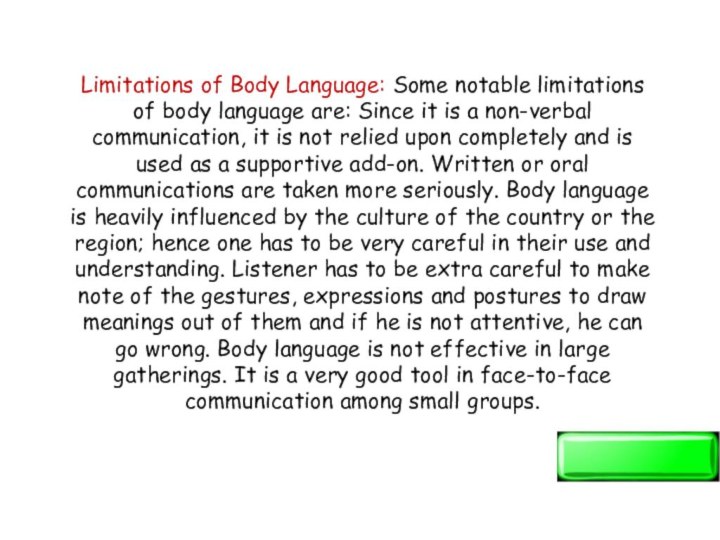

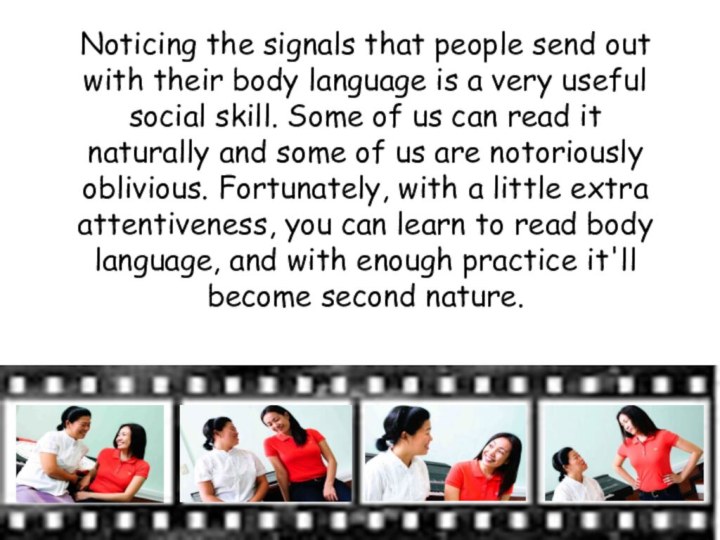
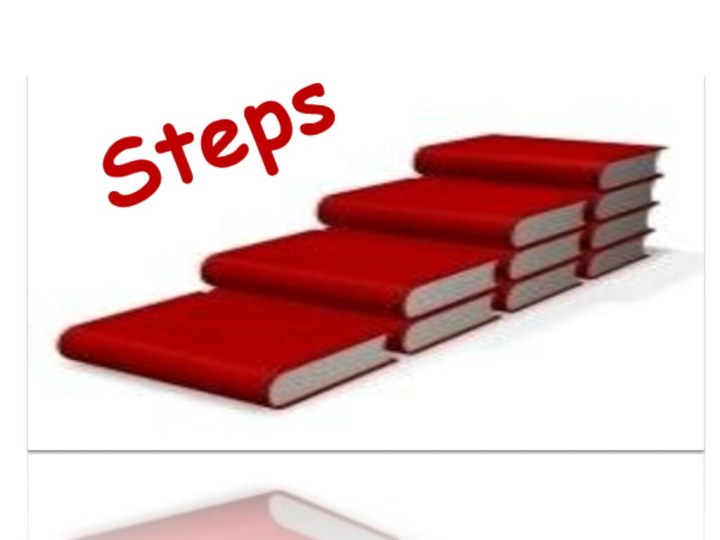

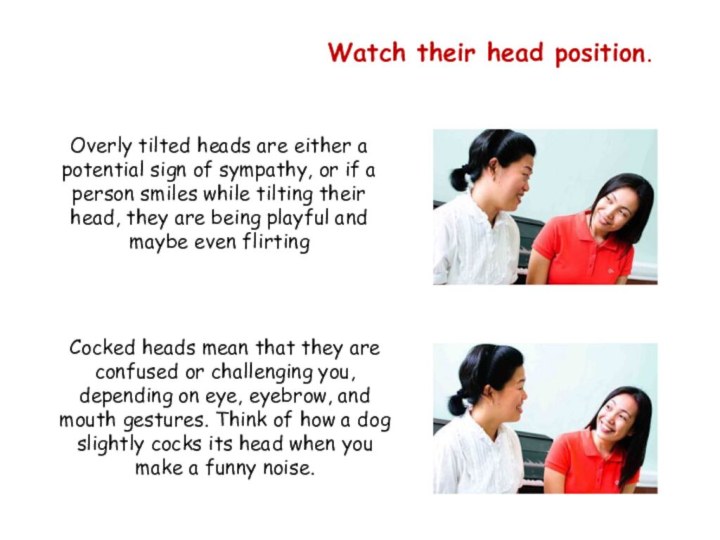
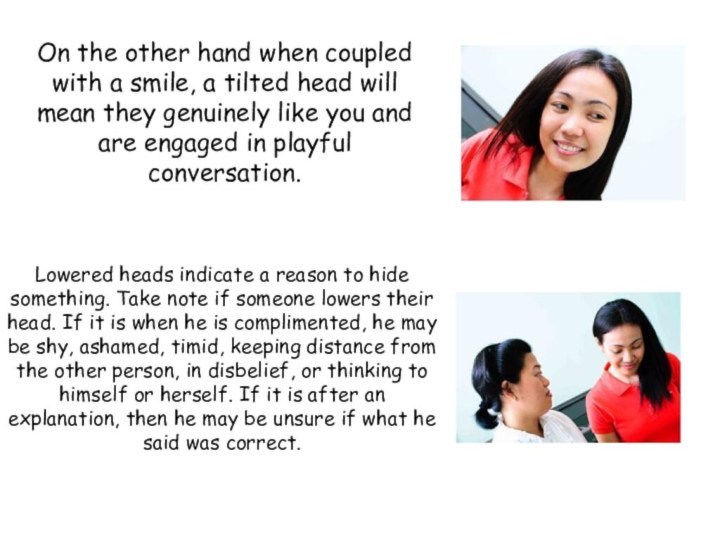
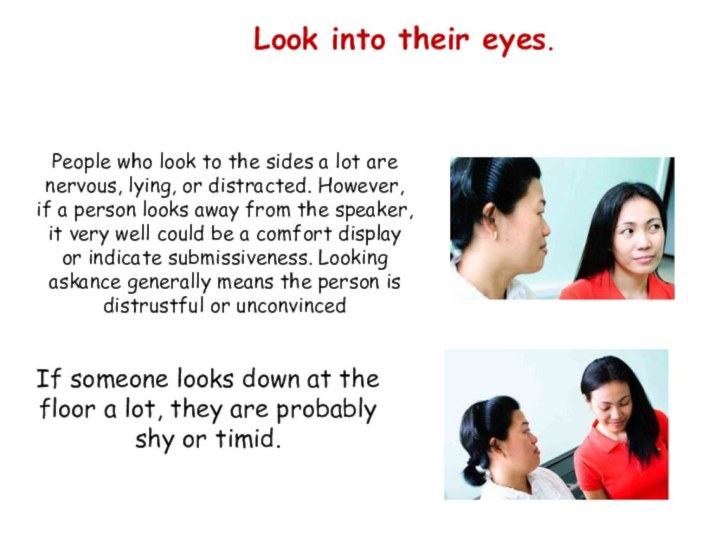
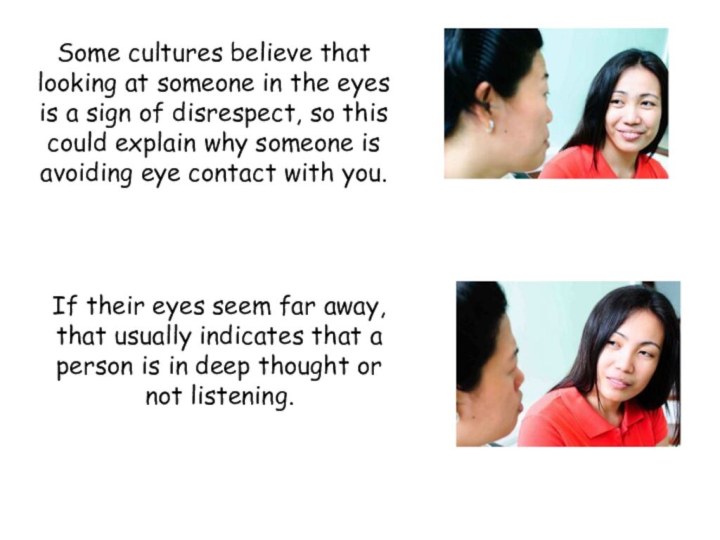
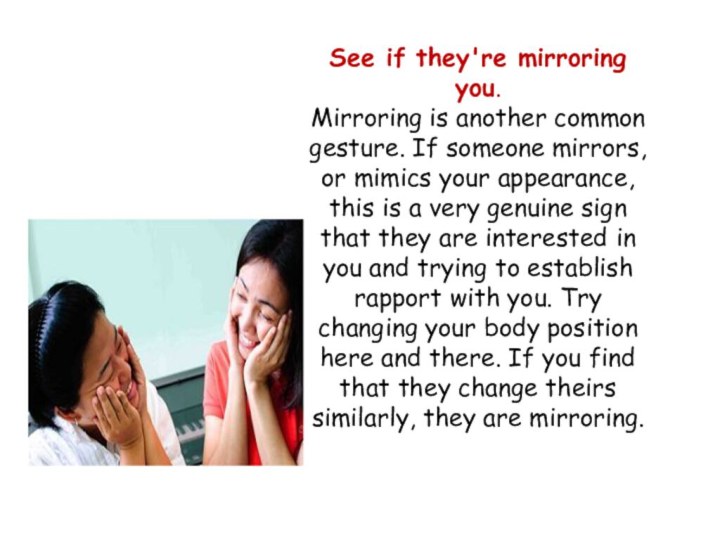
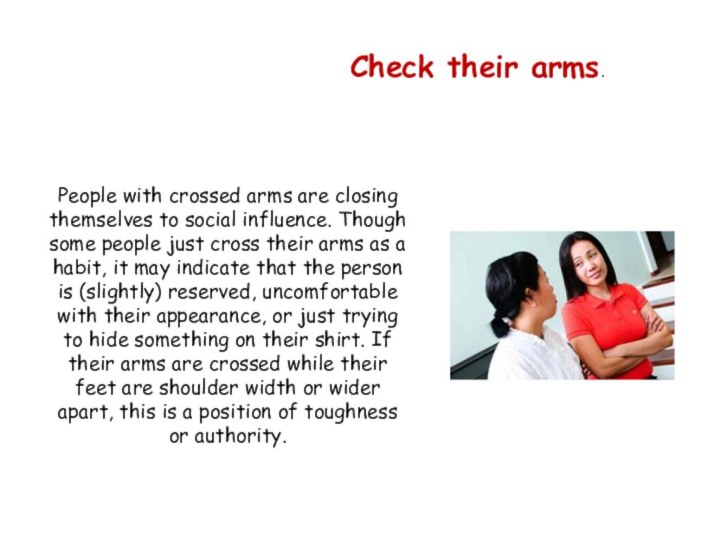
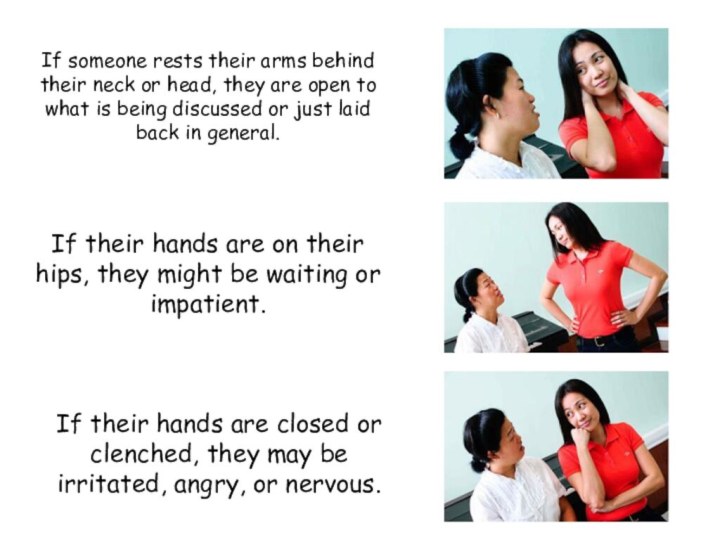
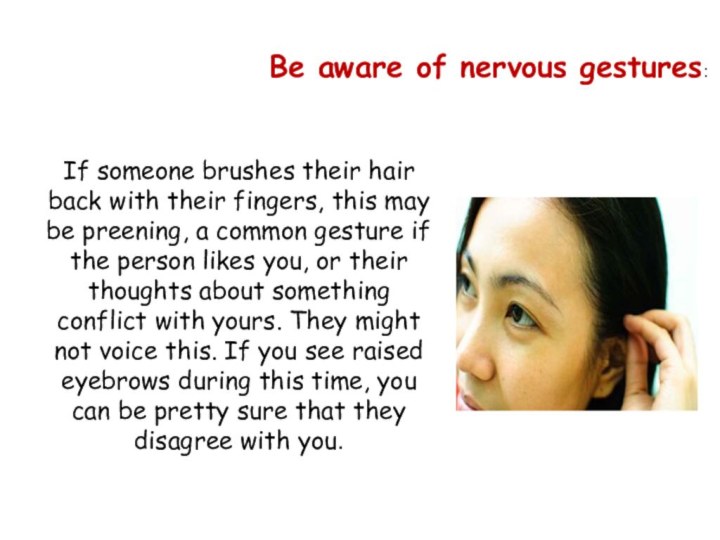
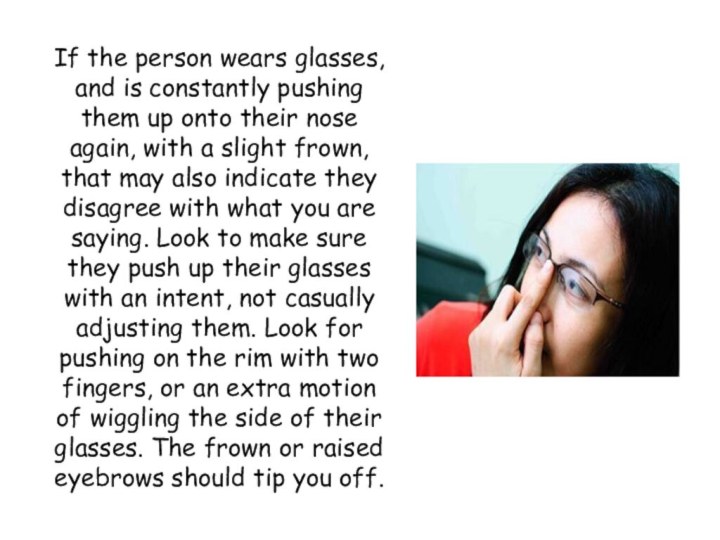

Слайд 3 Charlie Chaplin and other famous actors of silent
movies may be considered to be pioneers in non-verbal
communication skills as they conveyed meaning of their acting without uttering any dialogue. Non-verbal communication specialists enjoy watching cues and clues about the attitude and responses of other people by simply watching them in social functions, formal gatherings and in television shows. It is like ‘birdwatchers’ studying birds in order to understand their movements. Much the same way, young people develop the hobby of ‘girl-watching’ or ‘boy-watching’ in order to understand the meanings of their body movements.Слайд 4 By studying the actions of fellow human beings,
one can ultimately learn more about self. Words and
movements of body parts occur together with such predictability that, according to Prof Birdwhistle, a trained person is able to tell what movement a person is making by listening to his voice only; conversely, he is able to tell the words and phrases he is speaking by watching his gestures and expressions only. For example, a mother can easily make out from the sound of her infant child as to whether it has wetted the bed or is hungry or is just missing her.Слайд 5 About one million different gestures, expressions and sounds
have been identified. It would not be out of
place to mention that English is the most widely understood language in the world and consequently most developed. It has about 750,000 words although the exact number keeps fluctuating as words are added and go out of use almost simultaneously. According to Albert Meharbian, the average proportions of different types of communications are: Words (verbal communication) = 07 % Tone, pitch of the sound (Vocal communication) = 38 % Non-verbal communication (body language) = 55 % . According to Prof Birdwhistle, it is estimated that the proportion between verbal (face to face) and non-verbal communication is: verbal (face to face) communication = 35 % Non-verbal communication (Body Language) = 65 %Слайд 7 Advantages of Body Language: Resourceful managers make effective
use of the power of the body language. They
are able to take several advantages by taking note of the signs and signals of body language: It is a visual form of communication and is readily visible to the receivers of the message and facilitates decoding the message more accurately. Body language happens simultaneous to oral communication and supplements it, especially in face-to-face communications. Since body talks subconsciously, it adds intensity to the message. Without these gestures, expressions and postures, the communication may be bland. People are generally mindful of the body language. Its proper use can enhance the environment for business negotiations. It is a very good tool in face-to-face communication among small groups.Слайд 8 Limitations of Body Language: Some notable limitations of
body language are: Since it is a non-verbal communication,
it is not relied upon completely and is used as a supportive add-on. Written or oral communications are taken more seriously. Body language is heavily influenced by the culture of the country or the region; hence one has to be very careful in their use and understanding. Listener has to be extra careful to make note of the gestures, expressions and postures to draw meanings out of them and if he is not attentive, he can go wrong. Body language is not effective in large gatherings. It is a very good tool in face-to-face communication among small groups.Слайд 10 Noticing the signals that people send out with
their body language is a very useful social skill.
Some of us can read it naturally and some of us are notoriously oblivious. Fortunately, with a little extra attentiveness, you can learn to read body language, and with enough practice it'll become second nature.Слайд 12 Pay attention to how close someone is to
you.
The closer they are, the warmer they are
thinking of you. The farther away that someone is, the less they actually care of the situation or person. If you move slightly closer to them, do they move slightly further away? That means they don't want your interaction to be any more personal than it already is. If they don't move further away, then they are receptive. And if they respond by getting even closer to you, they probably really like you or are very comfortable around/by you.STEP 1
Слайд 13
Watch their head position.
Overly tilted heads are either
a potential sign of sympathy, or if a person
smiles while tilting their head, they are being playful and maybe even flirtingCocked heads mean that they are confused or challenging you, depending on eye, eyebrow, and mouth gestures. Think of how a dog slightly cocks its head when you make a funny noise.
STEP 2
Слайд 14 On the other hand when coupled with a
smile, a tilted head will mean they genuinely like
you and are engaged in playful conversation.Lowered heads indicate a reason to hide something. Take note if someone lowers their head. If it is when he is complimented, he may be shy, ashamed, timid, keeping distance from the other person, in disbelief, or thinking to himself or herself. If it is after an explanation, then he may be unsure if what he said was correct.
Слайд 15
Look into their eyes.
People who look to the
sides a lot are nervous, lying, or distracted. However,
if a person looks away from the speaker, it very well could be a comfort display or indicate submissiveness. Looking askance generally means the person is distrustful or unconvincedIf someone looks down at the floor a lot, they are probably shy or timid.
STEP 3
Слайд 16 Some cultures believe that looking at someone in
the eyes is a sign of disrespect, so this
could explain why someone is avoiding eye contact with you.If their eyes seem far away, that usually indicates that a person is in deep thought or not listening.
Слайд 17
See if they're mirroring you.
Mirroring is another
common gesture. If someone mirrors, or mimics your appearance,
this is a very genuine sign that they are interested in you and trying to establish rapport with you. Try changing your body position here and there. If you find that they change theirs similarly, they are mirroring.STEP 4
Слайд 18
STEP 5
Check their arms.
People with crossed arms are
closing themselves to social influence. Though some people just
cross their arms as a habit, it may indicate that the person is (slightly) reserved, uncomfortable with their appearance, or just trying to hide something on their shirt. If their arms are crossed while their feet are shoulder width or wider apart, this is a position of toughness or authority.Слайд 19 If someone rests their arms behind their neck
or head, they are open to what is being
discussed or just laid back in general.If their hands are on their hips, they might be waiting or impatient.
If their hands are closed or clenched, they may be irritated, angry, or nervous.

